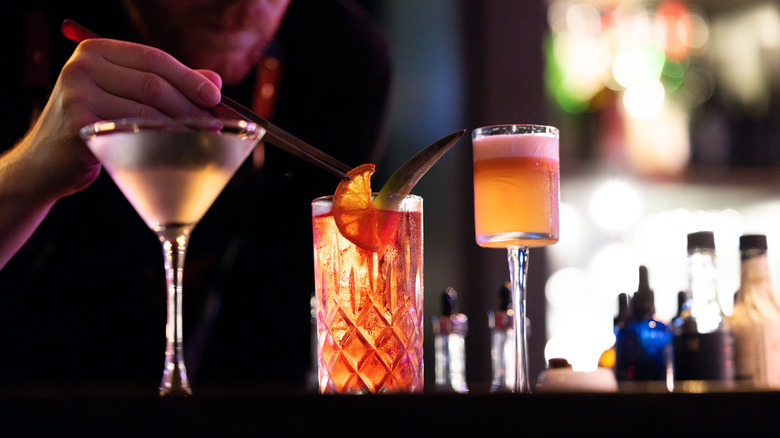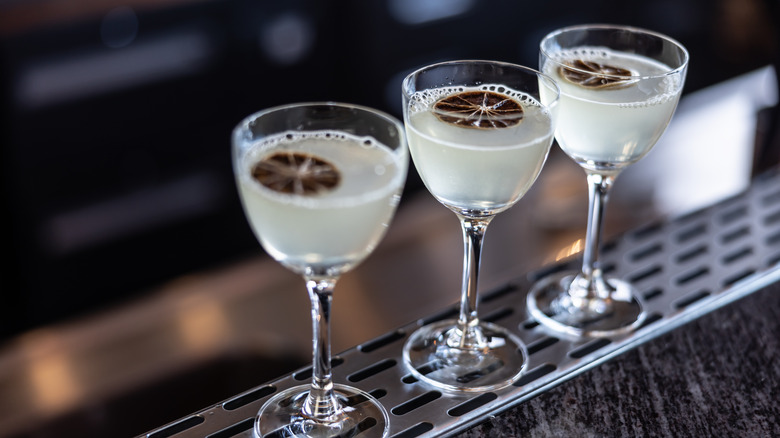The Famous Cocktail With A Bogus Origin Story
The Seelbach cocktail is an interesting one: bourbon, Cointreau, bitters, and champagne. The combination sounds like something you'd make out of desperation when your liquor cabinet is running low. Allegedly, it was created in 1917 when a bartender at the Seelbach hotel in Louisville, Kentucky, accidentally spilled champagne into a Manhattan cocktail — a true classic of bourbon or rye with sweet vermouth, bitters, and a cherry. The bartender loved it so much, he kept it as a drink at the hotel bar. The cocktail was apparently lost to time and the Prohibition era, that is, until 1995, when Adam Seger unearthed an archived hotel menu — and voilà, a star was reborn.
The good news about the Seelbach is that it's an easy-to-make cocktail that won't annoy your bartender. The bad news is its origin story is 100% false. Seger admitted to coming up with the cocktail in 1995, and in an effort to spread the word about his libation and promote the hotel, he fabricated the story. Luckily, though, it's a damn good cocktail.
Another famous drink with made-up origins
If there's anything you need to know about the history of cocktails, it's that there are a lot of fake stories and fabrications. For instance, take the Gimlet — a vintage cocktail featuring gin and lime cordial. Legend has it that a royal surgeon, Rear-Admiral Sir Thomas Desmond Gimlette of the British Navy, invented the Gimlet in the 19th century by adding Rose's Lime Cordial to gin to ward off scurvy. But the legal requirement of providing sailors with a similar mixture of water, lime, sugar, and rum every day was already standard procedure in the Navy, so Gimlette's attempt to replace rum with gin wouldn't have had much effect in treating scurvy. Of course, in the 1930s, the cause of scurvy was determined as a lack of vitamin C, which lime contains, so 19th-century doctors and scientists were certainly on to something.
Some cocktail historians suggest that the Gimlet was invented in the 1920s as a slow evolution from gin punch, but according to 1923's "ABC of Mixing Cocktails" by Harry MacElhone, the Gimlet was indeed a popular drink among sailors in the Navy, so its origin is widely contested. Other accounts point to the cocktail's rise in the 1930s when Schweppes referred to its popularity, calling it "Gin and Rose's" — not "Gimlet." Even the Oxford English Dictionary in 1933 had no mention of "Gimlet," suggesting that its recipe existed, but the term "Gimlet" had yet to be coined. It's not until the '60s that the "Gimlet" was advertised.
Whatever the history of these classic libations, the Gimlet and the Seelbach are two delicious cocktails.

